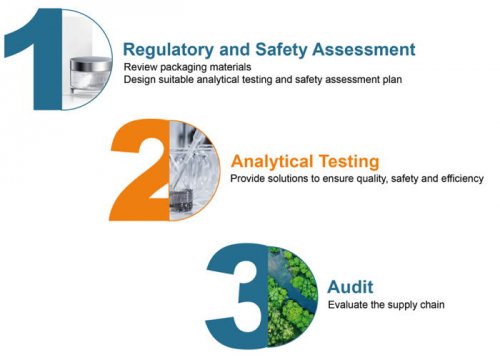The complexity of creating and selecting the right packaging is to guarantee that it is optimised for human and environmental health and safety, while other parameters include but are not limited to: performance aspects, eco-friendly solutions, speed-to-market considerations and cost efficiencies.
Beauty brands and packaging suppliers are increasingly embracing the challenge of designing packaging that is firstly safe, then secondly avoids reusing or recycling harmful materials. PCR materials, recyclable mono-materials (PP, PE, PET), glass, cartonboard… are experiencing a rise in recycling awareness and are facing regulatory concerns.
How to assess the safety of packaging?
In accordance with the Cosmetic Regulation (EC) No. 1223/2009 and more specifically with Article 3, a cosmetic product placed on the market must be safe for human health when used under normal or reasonably foreseeable conditions. The responsible person has to ensure that a safety assessment of the cosmetic product, including its packaging, is conducted. However, the Regulation does not provide any guidance on how to assess the safety of packaging and does not further define which substances may migrate, in which amounts this might be acceptable or how a positive finding of migration can be assessed.
When a formula is in contact with packaging, physico-chemical exchanges can occur, called content-content interactions. Migration is one of the main phenomena likely to bring substances from packaging materials to the cosmetic formulation.
In that way, the Commission Implementing Decision of November 25, 2013 (2013/674/EU) on guidelines for the application of Annex I of Regulation (EC) No. 1223/2009, provides additional guidance with regard to information on packaging materials and the possible release of substances from the packaging. This decision advises to consult Regulation (EC) No 1935/2004 on materials and articles intended to meet foodstuffs, to assess the safety of cosmetic packaging. Indeed, as food packaging has often already been tested, relevant information on the stability and migration of substances from materials may be available, although additional testing may also be necessary. It is important to refer to the regulations, standards, and texts in force, which are specific to the type of material used and the final use of the product. Indeed, as food packaging has often already been tested, relevant information on the stability and migration of substances from materials may be available, although additional testing may also be necessary. The principle adopted is that in most cases, if a package is safe for a specific type of food, it is safe for a cosmetic with similar physico-chemical properties to that of food. Despite this, reference should still be made to the relevant regulations, standards, and texts, which are specific to the type of material used and the final use of the product.
Quality control and risk assessment management procedures
In this regulatory context, in 2019 Cosmetics Europe published Guidelines which identify a set of useful information from packaging/material suppliers that supports the assessment of the impact of the packaging on the safety of the cosmetic product contained therein. The approach is based on the assessments made on food packaging, while taking into account the local tolerance.
More recently, in 2020, concern about waste and the circular economy has pushed industries to turn to packaging made of recycled materials. However, currently not all materials can claim compliance for food contact and there is no harmonised European legislation in place, with the notable exception of PET recycled through EFSA-evaluated protocols.
Eurofins supports clients’ quality control and risk assessment management procedures in the design, reuse, and valorisation of packaging, from the resin stage to the final packaging and during the life cycle of the product, by considering both simple and complex packaging.
In a context where environmental challenges, performance, safety, and regulatory issues are intertwined, Eurofins has put in place a 3-step strategy to evaluate the safety of packaging coupled with testing under relevant conditions.
We support beauty brands and packaging suppliers to help achieve and exceed their sustainability commitments and goals, such as improved recyclability and using recycled materials.

1. Regulatory and Safety Assessment of Cosmetic packaging by reviewing packaging material, checking conformities, evaluating potential container-content interactions, developing a suitable analytical testing and safety assessment plan… 2. Analytical Testing by performing chemical, physical and mechanical testing, analysing toxic substances, ensuring food contact testing (overall and specific migration, NIAS), evaluating plastic content with regard to the critical requirements of protection of the product, checking the packability for refill in points of sale, carrying out compostability testing… 3; Audit by evaluating the supply chain, packaging manufacturers and packaging materials suppliers…
With so much progress having already been made and more on the way for sustainable packaging, new, more sustainable bio-materials and new recycling processes, we expect to continue to innovate and create new solutions to meet the requirements of brands, suppliers and consumers.
Source link : https://www.premiumbeautynews.com/en/challenges-on-becoming-sustainable,19014












